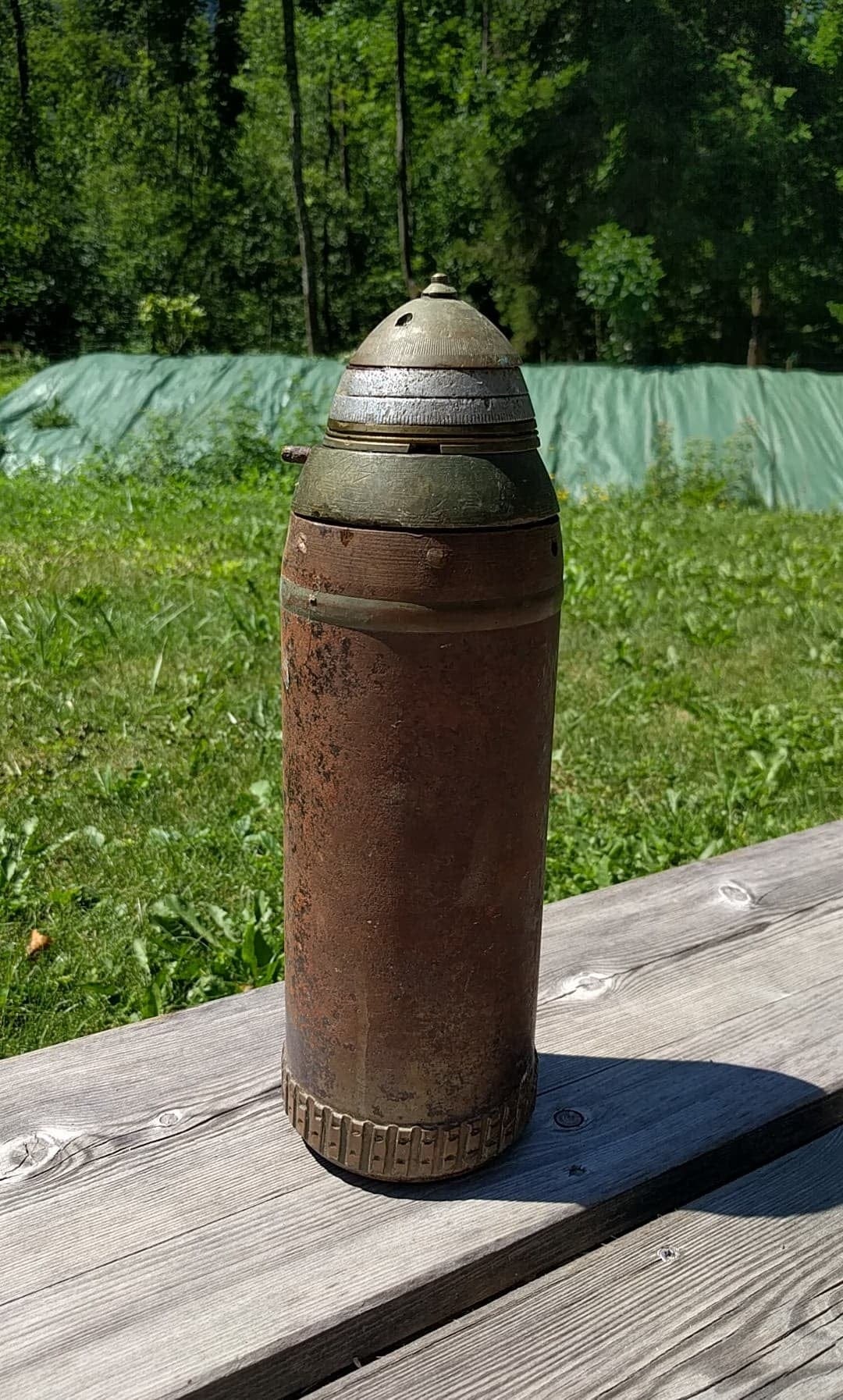My brother and I were recently digging through our grandpa’s old garage, a space that always felt like a treasure chest filled with forgotten relics and mysterious objects. The dim light filtered through dusty windows, casting long shadows over shelves cluttered with rusty tools, faded boxes, and cobweb-covered jars. It was one of those places where every corner held a story, and we couldn’t wait to uncover them.

As we sifted through stacks of old newspapers and vintage tins, we stumbled upon something unusual—a cylindrical metal object that immediately caught our attention. It was heavy, with faded markings etched along its surface and a distinct pointed tip. At first, we weren’t sure what we were looking at. Was it some kind of old tool? A piece of machinery? The shape and weight told us it was something significant, but we couldn’t quite place it.
After some careful inspection and a lot of squinting at the worn markings, we made out a date: 1915. The realization hit us almost simultaneously—this wasn’t just any piece of scrap metal. It was historical. Intrigued and admittedly a little nervous about handling something potentially dangerous, we decided to do some research before going any further.
We carefully placed the object on the workbench and took several photos from different angles. A quick search online led us to some promising results. We soon discovered that what we had found was an inert 1915-dated British 13-pounder shell. For those unfamiliar, a 13-pounder shell was commonly used by the British Army during World War I. These shells were part of field artillery systems and played a significant role in the war effort.
The word ‘inert’ brought a sigh of relief. Inert means the shell had been disarmed and was no longer capable of exploding. Essentially, it was now just a historical artifact—a relic from one of the most defining wars in modern history. Still, the sheer weight of holding something that had once been part of such a massive global conflict was humbling.
World War I artillery shells like this one were often fired from the QF 13-pounder field gun, a quick-firing artillery piece used primarily by the British Royal Horse Artillery. These guns were light, mobile, and capable of delivering rapid fire, which made them incredibly valuable on the battlefield. The 13-pounder was particularly known for its use in defensive positions and mobile attacks.
As we continued to research, we learned more about how these shells were manufactured, transported, and used. Each shell was carefully crafted and marked with identifying information, including its production date, manufacturing location, and sometimes even details about the specific batch it came from. Our shell, marked with ‘1915,’ was likely produced during one of the war’s most intense periods.
Holding the shell felt like holding a piece of history in our hands. We couldn’t help but imagine the journey it had taken to end up in our grandpa’s garage. Had it been brought back as a keepsake? Was it given to him by someone who served in the war? Or had it simply been purchased at an estate sale or antique shop long ago? The story behind how it got there may forever remain a mystery, but its historical significance was undeniable.
We decided to clean it up carefully, using gentle methods to preserve its markings and avoid damaging the surface. Once it was cleaned, we placed it on a sturdy wooden shelf in our grandpa’s garage—a fitting display for such an artifact. It felt right to leave it there, in the same space where it had been discovered, surrounded by other relics of a life well-lived.
Finding the inert 1915 British 13-pounder shell was more than just stumbling across an old object—it was a connection to the past, a tangible link to a time of immense struggle and sacrifice. It served as a reminder of how history isn’t always confined to textbooks or museums; sometimes, it’s tucked away in a dusty corner of a garage, waiting to be rediscovered.
Every time we visit the garage now, our eyes are drawn to that shell sitting proudly on the shelf. It’s a symbol of resilience, history, and the stories that objects can tell if we’re willing to listen.





